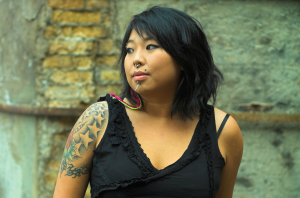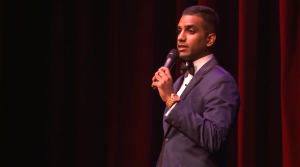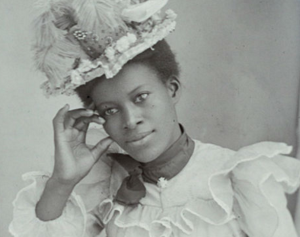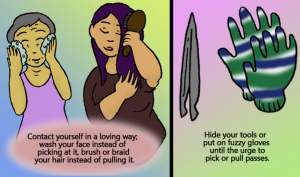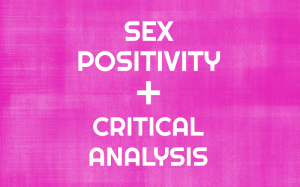
Source: Hello Beautiful
Originally published on Role/Reboot and cross-posted here with their permission.
My Facebook feed has been hijacked by engagement announcements.
In a few years, I know the profile pictures of ring fingers will be replaced by ultrasounds followed by swaddled infants and diapered toddlers.
For now, though, I’m stuck with the “rock shot” – a close-up of a diamond, or an outstretched hand blocking the ring-wearer’s face.
With each princess cut or pear-shaped gem, I wonder exactly when and how we collectively decided that mega-bling was the best way to mark impending commitment.
The notion of claiming a spouse with circular jewelry is not a new one.
Cavemen tied hemp and grass around their mates’ wrists and ankles to mark their bond.
In 200 BC, Roman grooms gave brides a gold ring during the wedding ceremony and an iron ring to wear at home to signify his possession of her.
Legend has it that in Turkey, a “puzzle ring” was created with intricate pieces and a unique assembly pattern known only by the husband.
The purpose?
To keep wives faithful when left alone. If she took it off to fool around, she wouldn’t be able to put it back on.
I’ll be the first to admit that in the roster of my personal values, “tradition” and “convention” are solidly near the bottom of my list.
And symbolism I value only so far as the symbol is representative of some thing or concept I hold dear.
Consequently, my gut reaction to engagement rings is bafflement.
Of all the customs surrounding weddings, why is one of the most revered symbols of marriage a tangible reminder of the sexist history of the institution?
In this day and age, when most people expect to enter their marriage as equal partners, why would one partner want to sport a relic of an era when marriage meant being legally possessed by her husband?
And yet 80% of proposals today include a diamond ring, so clearly I’m missing something that my peers have figured out.
As I talked to friends and colleagues for this essay – educated, employed women in their 20s – “commitment,” “tradition,” and “convention” were the buzzwords I couldn’t ignore.
The commitment logic, as I understand it, goes something like this: No man casually drops $5,000 on a diamond ring (the average cost these days) for someone he may or may not end up with.
His investment in the jewelry is a proxy for his investment in the relationship and in your future together.
When the average American man spends three months finding the ring, and several months of paychecks purchasing it, he demonstrates that his proposal is backed by serious thought and planning.
As for tradition, wedding culture is positively steeped in it.
From the proposal on one knee (71% of contemporary proposals), to the white dress (drenched as it is in its own symbolic history), to the tossing of the bouquet, weddings are mapped from start to finish by all the weddings that came before.
Every couple adjusts these traditions as they see fit, adding a dance number, ditching the shoes for bare feet on the beach, choosing a favorite uncle to officiate instead of a religious leader, but the bare bones tend to hold strong.
People find something particularly powerful in reenacting a ceremony in which their parents and grandparents have participated decades before.
It’s a sort of self-inauguration into the next stage of your life, marked with the same rites of passage that have been enacted for centuries.
And then there’s convention.
Anyone who bucks a trend, like stay-at-home-dads or married women who keep their last names, looks forward to endless annoying conversations with nosy strangers.
Diamond rings are so universal these days that to drop the words “my fiancé” while not wearing one will invite more questions than most people feel like answering.
Sometimes, it’s just easier to go with the flow, especially when the flow is a very pretty piece of jewelry that will draw lots of oohs and aahs.
What really trips me up about engagement rings is the one-sidedness of the gesture.
I have no beef with the idea of commemorating important relationships and decisions with tangible symbols (says the girl who shares a family-themed tattoo with her brother), but compare engagement rings with wedding rings.
The engagement ring is traditionally a gift from the man to the woman that costs thousands of dollars.
It is a symbol that she is no longer a single woman, “bagged and tagged” as my roommate says.
Both partners have made this formal commitment, but only he is required to pony up the dough, and only she is required to display her changed status in a public fashion.
Wedding bands for men, on the other hand, have been popular since the 1940s when soldiers wore them to remind themselves of wives at home.
Wedding bands serve the same function, a public declaration of devotion and commitment, but in an egalitarian manner.
I asked my mom, the first feminist role model I ever had, her thoughts on this subject of engagement rings.
After listening to my melodramatic pitch – that it is a sexist relic from a bygone era – she reminded me that “a marriage is many things, one piece of which is symbols.”
I responded that this particular symbol, associated for me with the misogynist history of marriage, is not one I want anywhere near my future.
But why is this, of all issues, the one where I have to put my foot down?
I participate in plenty of traditions with roots in ideas I don’t believe in.
Every year at Christmas, I put up a tree, listen to some carols, drink my eggnog, and say a quiet thank you for a few days off from work and time with my family.
Though I am fully aware of the origins of the holiday, not an ounce of my celebration has anything to do with Jesus.
The lens through which I view the world primarily has two colors, feminism and history.
Among the things I value in relationships – respect, reciprocity, honesty, and generosity – equality ranks perhaps the highest.
Instead of “I did this for you,” I want “we did this together.”
To my mind, that doesn’t require a chore wheel or the splitting of pennies over a restaurant bill, but is rather about the fundamental platform of equal commitment.
For me, such a lopsided investment, a $5,000 gift from him to her, is not how I want to kick things off.
But when all is said and done, the best thing about adulthood is that we pick which of the customs of our ancestors and communities we want to adopt or adapt for ourselves.
Some conventions we appreciate for the way they remind us of our past, or the way they connect us to our peers, while others we mimic because it’s easier than explaining why we don’t.
Like my mom said, symbols matter.
It’s just a question of thinking critically about which symbols we want and why, and which ones are ready to fall by the wayside.
Want to discuss this further? Login to our online forum and start a post! If you’re not already registered as a forum user, please register first here.
Emily Heist Moss is a New Englander in love with Chicago, where she works in a tech start-up. She blogs every day about gender, media, politics and sex at Rosie Says, and has written for Jezebel, The Frisky, The Huffington Post and The Good Men Project. Find her on Facebook and Twitter.
Search our 3000+ articles!
Read our articles about:
Our online racial justice training
Used by hundreds of universities, non-profits, and businesses.
Click to learn more







